Opinion & Analysis
Is a PGA Golf Management program for you?

Editor’s note: Henry Stetina is the Program Coordinator for the PGA Golf Management Program at New Mexico State University.
You’re a senior in high school, and if you’re anything like I was, you’re scared, nervous and uncertain of what to do next. Assuming that you love golf, I am going to guess that you’ve probably dreamed of playing golf in college and ultimately playing on the PGA Tour. As good as that sounds, unfortunately for most of us, it is just that: a dream.
I believe in following your dreams, but the chances of actually making the PGA Tour are very slim from a statistical standpoint.
So now what? What are you going to do with your life and/or college education? Well, there is still hope for being around the game that you love, while simultaneously making a comfortable living. Becoming a PGA Golf Professional who manages the operations of a golf facility, coordinates tournaments, merchandises and gives golf lessons is a viable option for anyone with a passion for golf.
The Program
The PGA Golf Management University Program is a 4.5-year program, offering students the opportunity to earn PGA membership while earning a bachelor’s degree in a field relevant to the golf industry. Students complete Levels 1, 2, and 3 of the PGA’s PGM Education, 16 months of internship under direct supervision of a PGA professional, and the PGA’s Playing Ability Test, thus earning membership into the PGA of America upon graduation and eligible employment.
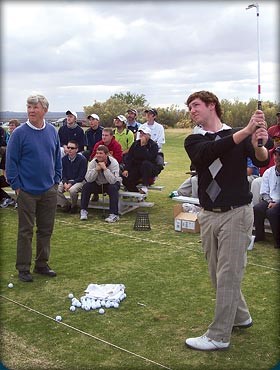
Pictured above: PGA Hall of Fame instructor, Michael Hebron, hosts teaching seminars for PGA Golf Management students.
Not only do students complete the necessary coursework for the PGA, but they also have access to seminars taught by some of the industry’s leading experts in teaching, club repair, rules of golf, club management, and other specialties within the golf industry.
The program provides students with hands-on experience teaching golfers of all levels, through group and private lessons, as well as learning how to fit and repair golf clubs, including re-gripping and re-shafting. Many of the university programs have teaching facilities that are equipped with the industry’s leading launch monitors, video equipment, and motion analysis software, which teaches students how to utilize technology for teaching and club fitting.
While a large part of the curriculum is based on developing golf instructors, students also have the opportunity to better their own games through player development programs taught by expert golf instructors and tournament programs that allow students the opportunity to test their game in competition.
The Mentor
One of the most useful resources for the students is the faculty and staff who run the PGA Golf Management Programs. The directors are educated and respected within the golf industry, and their relationships and expertise help turn students into professionals.
[quote_box_center]“The opportunity to help mold these young students into professionals and find out what they want as a career has been gratifying and challenging,” says Pat Gavin, PGA member and Director of the PGA Golf Management Program at New Mexico State University. “Most students come to NMSU knowing they love golf, but my job is to help them decide that they want the golf industry as a career.”[/quote_box_center]
The Student
As an incoming freshman, you can expect to complete the Qualifying Level and begin Level 1 of the PGA’s PGM Education. This includes, but is not limited to: Intro to the PGA Golf Management Program, Constitution of the PGA of America, Rules of Golf, Business Planning, and Customer Relations. At the completion of freshman year, students embark on a three-month internship at a green-grass facility under the supervision of a PGA member.
Note: 99.9 percent of internships are paid internships, and many include free housing. Students are never expected to work without pay.
Most PGA Golf Management Programs use a schedule where students attend school in the fall and spring, and then begin an internship during the summer.
Many students get the opportunity to teach junior golf clinics as well as group and individual lessons for adults while on internship. Students also get the opportunity to meet leaders in the golf industry and influential people in the business world.
The Alumni
One of the greatest benefits of the PGA Golf Management Programs is its fraternal-like atmosphere, and the networking opportunities that are associated with it. After graduation, many students will pursue a career in the golf industry.
[quote_box_center]“I receive emails on a daily basis regarding job openings, and I immediately forward them to our database of over 700 alumni and 150 current students,” Gavin says. “We pride ourselves on 100 percent job placement on internships as well as permanent positions upon graduation.”[/quote_box_center]
Questions to Ask
Q: What degree will I earn, and does this degree carry any weight outside of golf?
Some universities offer degrees in Business, while others are in Hotel, Restaurant and Tourism Managment (HRTM), or even in Parks and Recreation.
Let’s say that you complete the PGA Golf Management Program, and five years into your career you realize that the golf industry isn’t for you. At that point, the degree becomes really important. Changing careers and getting a new job may be dependant on the degree that you earned in college. Also, there are some universities that don’t even write “PGA Golf Management” or “golf” anywhere on the diploma. This is to protect the graduates in the event that he/she wishes to make a career change and leave the golf industry.
Q: Can I become a golf professional without entering this program?

PGA Master Professional, Bill Cioffoletti, speaks to PGA Golf Management students prior to the 2014 PGA Jones Cup
If PGA membership is what you seek but you don’t like the idea of a 4.5-year university program, there is another option. You could enroll in the PGA apprentice program, go through the same curriculum as the university program and earn PGA membership. This a great option for individuals who already have a college degree. A disadvanage of the aprentice program is that it does not come with the networking opportunities of the PGA Golf Management Program, and it requires going to the PGA Education Center in Florida to attend various seminars.
The Decision
For all you high school students, ask yourself a simple question: “What job will allow me to look forward to going to work every single day?”
If it’s golf, then maybe you should consider a career in the golf industry. It will keep you connected to the game that you love and allow you to share your passion for golf with others.
For more information regarding the PGA Golf Management Program, click here.
- LIKE71
- LEGIT15
- WOW7
- LOL4
- IDHT2
- FLOP1
- OB6
- SHANK24
Opinion & Analysis
Ryan: Why the race to get better at golf might be doing more harm than good

B.F. Skinner was one of the most important psychologists of the 20th century, developing the foundation of the development of reinforcement, and in doing so, creating the concept of behaviorism. In simple terms, this means that we are conditioned by our habits. In practical terms, it explains the divide between the few and far between elite instructors and college coaches.
To understand the application, let’s quickly review one of B.F. Skinner’s most important experiments; superstitions in the formation of behavior by pigeons. In this experiment, food was dispensed to pigeons at random intervals. Soon, according to Skinner, the pigeons began to associate whatever action they were doing at the time of the food being dispensed. According to Skinner, this conditioned that response and soon, they simply haphazardly repeated the action, failing to distinguish between cause and correlation (and in the meantime, looking really funny!).
Now, this is simply the best way to describe the actions of most every women’s college golf coach and too many instructors in America. They see something work, get positive feedback and then become conditioned to give the feedback, more and more, regardless of if it works (this is also why tips from your buddies never work!).
Go to a college event, particularly a women’s one, and you will see coaches running all over the place. Like the pigeons in the experiment, they have been conditioned into a codependent relationship with their players in which they believe their words and actions, can transform a round of golf. It is simply hilarious while being equally perturbing
In junior golf, it’s everywhere. Junior golf academies make a living selling parents that a hysterical coach and over-coaching are essential ingredients in your child’s success.
Let’s be clear, no one of any intellect has any real interest in golf — because it’s not that interesting. The people left, including most coaches and instructors, carve out a small fiefdom, usually on the corner of the range, where they use the illusion of competency to pray on people. In simple terms, they baffle people with the bullshit of pseudo-science that they can make you better, after just one more lesson.
The reality is that life is an impromptu game. The world of golf, business, and school have a message that the goal is being right. This, of course, is bad advice, being right in your own mind is easy, trying to push your ideas on others is hard. As a result, it is not surprising that the divorce rate among golf professionals and their instructors is 100 percent. The transfer rate among college players continues to soar, and too many courses have a guy peddling nefarious science to good people. In fact, we do at my course!
The question is, what impact does all this have on college-age and younger kids? At this point, we honestly don’t know. However, I am going to go out on a limb and say it isn’t good.
Soren Kierkegaard once quipped “I saw it for what it is, and I laughed.” The actions of most coaches and instructors in America are laughable. The problem is that I am not laughing because they are doing damage to kids, as well as driving good people away from this game.
The fact is that golfers don’t need more tips, secrets, or lessons. They need to be presented with a better understanding of the key elements of golf. With this understanding, they can then start to frame which information makes sense and what doesn’t. This will emancipate them and allow them to take charge of their own development.
- LIKE11
- LEGIT3
- WOW1
- LOL1
- IDHT0
- FLOP1
- OB0
- SHANK9
19th Hole
Vincenzi’s 2024 Valspar Championship betting preview: Elite ballstrikers to thrive at Copperhead

The PGA TOUR will stay in Florida this week for the 2024 Valspar Championship.
The Copperhead Course at Innisbrook Resort is a par 71 measuring 7,340 yards and features Bermudagrass greens overseeded with POA. Infamous for its difficulty, the track will be a tough test for golfers as trouble lurks all over the place. Holes 16, 17 and 18 — also known as the “Snake Pit” — make up one of the toughest three-hole stretches in golf and should lead to a captivating finish on Sunday.
The field is comprised of 156 golfers teeing it up. The field this week is solid and is a major improvement over last year’s field that felt the impact of players skipping due to a handful of “signature events” in a short span of time.
Past Winners at Valspar Championship
- 2023: Taylor Moore (-10)
- 2022: Sam Burns (-17)
- 2021: Sam Burns (-17)
- 2019: Paul Casey (-8)
- 2018: Paul Casey (-10)
- 2017: Adam Hadwin (-14)
- 2016: Charl Schwartzel (-7)
- 2015: Jordan Spieth (-10)
In this article and going forward, I’ll be using the Rabbit Hole by Betsperts Golf data engine to develop my custom model. If you want to build your own model or check out all of the detailed stats, you can sign up using promo code: MATTVIN for 25% off any subscription package (yearly is best value).
Key Stats For Copperhead
1. Strokes Gained: Approach
Strokes Gained: Approach grades out as the most important statistic once again this week. Copperhead really can’t be overpowered and is a second-shot golf course.
Total SG: Approach Over Past 24 Rounds (per round)
- Tony Finau (+.90)
- Nick Taylor (+.81)
- Justin Thomas (+.77)
- Greyson Sigg (+.69)
- Christiaan Bezuidenhout (+.67)
2. Good Drive %
The long hitters can be a bit limited here due to the tree-lined fairways and penal rough. Playing from the fairways will be important, but laying back too far will cause some difficult approaches with firm greens that may not hold shots from long irons.
Golfers who have a good balance of distance and accuracy have the best chance this week.
Good Drive % Over Past 24 Rounds
- Brice Garnett (+91.3%)
- Zach Johnson (+91.1%)
- Sam Ryder (+90.5%)
- Ryan Moore (+90.4%)
- Aaron Rai (+89.7%)
3. Strokes Gained: Ball Striking
Adding ball-striking puts even more of a premium on tee-to-green prowess in the statistical model this week. Golfers who rank highly in ball-striking are in total control of the golf ball which is exceedingly important at Copperhead.
SG: Ball Striking Over Past 24 Rounds:
- Xander Schauffele (+1.32)
- Keith Mitchell (+1.29)
- Tony Finau (+1.24)
- Cameron Young (+1.17)
- Doug Ghim (+.95)
4. Bogey Avoidance
With the conditions likely to be difficult, avoiding bogeys will be crucial this week. In a challenging event like the Valspar, oftentimes the golfer who is best at avoiding mistakes ends up on top.
Gritty golfers who can grind out difficult pars have a much better chance in an event like this than a low-scoring birdie-fest.
Bogey Avoidance Over Past 24 Rounds
- Brice Garnett (+9.0)
- Xander Schauffele (+9.3)
- Austin Cook (+9.7)
- Chesson Hadley (+10.0)
- Greyson Sigg (+10.2)
5. Strokes Gained: Total in Difficult Conditions
Conditions will be tough this week at Copperhead. I am looking for golfers who can rise to the occasion if the course plays as difficult as it has in the past.
Strokes Gained: Total in Difficult Conditions Over Past 24 rounds
- Xander Schauffele (+1,71)
- Min Woo Lee (+1.39)
- Cameron Young (+1.27)
- Jordan Spieth (+1.08)
- Justin Suh (+.94)
6. Course History
That statistic will tell us which players have played well at Copperhead in the past.
Course History Over Past 24 rounds
- Patrick Cantlay (+3.75)
- Sam Burns (+2.49)
- Davis Riley (+2.33)
- Matt NeSmith (+2.22)
- Jordan Spieth (+2.04)
The Valspar Championship Model Rankings
Below, I’ve compiled overall model rankings using a combination of the five key statistical categories previously discussed — SG: Approach (27%), Good Drive % (15%), SG: BS (20%), Bogeys Avoided (13%), Course History (13%) Strokes Gained: Total in Difficult Conditions (12%).
- Xander Schauffele
- Doug Ghim
- Victor Perez
- Greyson Sigg
- Ryan Moore
- Tony Finau
- Justin Thomas
- Sam Ryder
- Sam Burns
- Lucas Glover
2024 Valspar Championship Picks
Justin Thomas +1400 (DraftKings)
Justin Thomas will be disappointed with his finish at last week’s PLAYERS Championship, as the past champion missed the cut despite being in some decent form heading into the event. Despite the missed cut, JT hit the ball really well. In his two rounds, the two-time major champion led the field in Strokes Gained: Approach per round.
Thomas has been up and down this season. He’s missed the cut in two “signature events” but also has finishes of T12 at the Arnold Palmer Invitational, T12 at the Waste Management Phoenix Open, T6 at the Pebble Beach AT&T Pro-Am and T3 at the American Express. In his past 24 rounds, he ranks 3rd in the field in Strokes Gained: Approach and 6th in Strokes Gained: Ball Striking in the field.
Thomas loves Copperhead. In his last three tries at the course, he’s finished T13, T3 and T10. Thomas would have loved to get a win at a big event early in the season, but avoidable mistakes and a balky putter have cost him dearly. I believe a trip to a course he loves in a field he should be able to capitalize on is the right recipe for JT to right the ship.
Christiaan Bezuidenhout +6000 (FanDuel)
Christiaan Bezuidenhout is playing spectacular golf in the 2024 season. He finished 2nd at the American Express, T20 at Pebble Beach and T24 at the Genesis Invitational before finishing T13 at last week’s PLAYERS Championship.
In his past 24 rounds, the South African ranks 3rd in the field in Strokes Gained: Approach and 26th in Strokes Gained: Ball Striking. Bezuidenhout managed to work his way around TPC Sawgrass last week with minimal damage. He only made five bogeys in the entire week, which is a great sign heading into a difficult Copperhead this week.
Bezuidenhout is winless in his PGA Tour career, but certainly has the talent to win on Tour. His recent iron play tells me that this week could be a breakthrough for the 35-year-old who has eyes on the President’s Cup.
Doug Ghim +8000 (FanDuel)
Doug Ghim has finished in the top-16 of his past five starts. Most recently, Ghim finished T16 at The PLAYERS Championship in a loaded field.
In his past 24 rounds, Ghim ranks 8th in Strokes Gained: Approach and 5th in Strokes Gained: Ball Striking. In terms of his fit for Copperhead, the 27-year-old ranks 12th in Bogey Avoidance and 7th in Strokes Gained: Total in Difficult Conditions, making him a great fit for the course.
Ghim has yet to win on Tour, but at one point he was the top ranked Amateur golfer in the world and played in the 2017 Arnold Palmer Cup and 2017 Walker Cup. He then won the Ben Hogan award for the best male college golfer in 2018. He certainly has the talent, and there are signals aplenty that his talent in ready to take him to the winner’s circle on the PGA Tour.
Sepp Straka +8000 (BetRivers)
Sepp Straka is a player who’s shown he has the type of game that can translate to a difficult Florida golf course. The former Presidents Cup participant won the 2022 Honda Classic in tough conditions and should thrive with a similar test at Copperhead.
It’s been a slow 2024 for Straka, but his performance last week at the PLAYERS Championship surely provides some optimism. He gained 5.4 strokes on approach as well as 1.88 strokes off the tee. The tee-to-green game Straka showed on a course with plenty of danger demonstrates that he can stay in control of his golf ball this week.
It’s possible that the strong performance last week was an outlier, but I’m willing to bet on a proven winner in a weaker field at a great number.
Victor Perez +12000 (FanDuel)
Victor Perez is no stranger to success in professional golf. The Frenchman has three DP World Tour wins including a Rolex Series event. He won the 2019 Alfred Dunhill Links Championship, as well as the 2023 Abu Dhabi HSBC Championship, which are some big events.
Perez earned his PGA Tour card this season and enters the week playing some fantastic golf. He finished in a tie for 16th in Florida at the Cognizant Classic and then tied for third in his most recent start at the Puerto Rico Open.
In his past 24 rounds in the field, Perez ranks 11th in Strokes Gained: Approach, 1oth in Strokes Gained: Ball Striking, 6th in Good Drive % and 15th in Bogey Avoidance.
Perez comes in as a perfect fit for Copperhead and offers serious value at triple-digit odds.
- LIKE16
- LEGIT3
- WOW2
- LOL1
- IDHT0
- FLOP1
- OB2
- SHANK6
Opinion & Analysis
Myrtle Beach, Explored: February in South Carolina

As I gain in experience and age, and familiarity breeds neither contempt nor disdain, I understand why people return to a place. A destination like Myrtle Beach offers a sizable supply and diversity of restaurants, entertainment venues, and shops that are predicated on the tenets of the service industry. Greet your customers with a smile and a kind word, and they will find comfort and assurance. Provide them with a memorable experience and they will suggest your place of business to others.
My first tour of Myrtle Beach took place in the mid-1980s, and consisted of one course: Gator Hole. I don’t remember much from that day, and since Gator Hole closed a decade later, I cannot revisit it to recollect what I’d lost. Since then, I’ve come to the Grand Strand a few times, and been fortunate to never place a course more than once. I’ve seen the Strantz courses to the south and dipped my toe in the North Carolina courses of Calabash. I’ve been to many in the middle, including Dunes, Pine Lakes, Grande Dunes among them.
2024 brought a quartet of new courses, including two at the Barefoot Resort. I’d heard about the North Myrtle Beach four-pack of courses that highlight the Barefoot property, including layouts from Pete Dye, Tom Fazio, Davis Love III, and Greg Norman. I had the opportunity to play and shoot the Dye and Fazio tracks, which means that I’ll have to return to see the other two. Sandwiched between them were the TPC-Myrtle Beach course, also from Tom Fazio, and the Pawley’s Plantation trace, by the hand of Jack Nicklaus. I anticipated a bit of the heroic, and bit of the strategic, and plenty of eye candy. None of those architects would ever be considered a minimalist, so there would be plenty of in-play and out-of-play bunkers and mounds to tantalize the senses.
My nephew arrived a few days early, to screen a few more courses. As a result, you the reader will have an extra quarter of mini-reviews, bringing the total of courses in this piece to eight. It was inconceivable that CJR would play four courses that I had never played nor photographed, but that was the case. His words appear at the end of this piece. We hope that you enjoy the tour.
Main Feature: Two Barefoots, a TPC, and Pawley’s Plantation
What Paul “Pete” Dye brought back from his trips to the United Kingdom, hearkened back to what C.B. MacDonal did, some 65 years prior. There is a way of finding bunkers and fairways, and even green sites, that does not require major industrial work. The Dye course at Barefoot Resorts takes you on a journey over the rumpled terrain of distant places. If there’s one element missing, it’s the creased and turbulent fairways, so often found in England and Ireland. The one tenet of playing a Dye course, is to always aim away from temptation, from where your eyes draw you. Find the safe side of the target, and you’ll probably find your ball. It then stands that you will have a shot for your next attempt. Cut the corner, and you might have need to reload. The Barefoot course begins gently, in terms of distance, but challenges with visual deception. After two brief 4s and a 3, the real work begins. The course is exposed enough, to allow the coastal winds to dance along the fairways. Be ready to keep the ball low and take an extra club or two.
If memory serves, TPCMB is my first trek around a TPC-branded course. It had all the trappings of a tour course, from the welcome, through the clubhouse, to the practice facilities and, of course, the course. TPC-Myrtle Beach is a Tom Fazio design, and if you never visit Augusta National, you’ll now have an idea of what it is like. You play Augusta’s 16th hole twice at TPCMB, and you enjoy it both times. Fazio really likes the pond-left, green-angle-around par three hole, and his two iterations of it are memorable.
You’ll also see those Augusta bunkers, the ones with the manicured edges that drop into a modestly-circular form. What distinguishes these sand pits is the manner in which they rise from the surrounding ground. They are unique in that they don’t resemble the geometric bunkering of a Seth Raynor, nor the organic pits found in origin courses. They are built, make no mistake, and recovery from them is manageable for all levels of bunker wizardry.
If you have the opportunity to play the two Tom Fazio courses back to back, you’ll notice a marked difference in styling. Let me digress for a moment, then circle back with an explanation. It was written that the NLE World Woods course designed by Fazio, Pine Barrens, was an homage to Pine Valley, the legendary, New Jersey club where Fazio is both a member and the architect on retainer. The Pine Barrens course was plowed under in 2022, so the homage no longer exists. At least, I didn’t think that it existed, until I played his Barefoot Resort course in North Myrtle Beach.
Pine Valley might be described as an aesthetic of scrub and sand. There are mighty, forced carries to travers, along with sempiternal, sandy lairs to avoid. Barefoot Fazio is quite similar. If you’re not faced with a forced carry, you’ll certainly contend with a fairway border or greenside necklace of sand. When you reach the 13th tee, you’ll face a drive into a fairway, and you might see a distant green, with a notable absence: flagstick. The 13th is the icing on the homage cake, a callout of the 8th hole at Pine Valley. Numero Ocho at the OG has two greens, side by side, and they change the manner in which the hole plays (so they say.) At Barefoot Fazio, the right-side green is a traditional approach, with an unimpeded run of fairway to putting surface. The left-side green (the one that I was fortunate to play) demands a pitch shot over a wasteland. It’s a fitting tribute for the rest of us to play.
Be certain to parrot the starter, Leon’s, advice, and play up a deck of tees. Barefoot Fazio offers five par-three holes, so the fours and fives play that much longer. Remember, too, that you are on vacation. Why not treat yourself to some birdie looks?
The Jack Nicklaus course at Pawley’s Plantation emerged from a period of hibernation in 2024. The greens were torn up and their original contours were restored. Work was overseen by Troy Vincent, a member of the Nicklaus Architecture team. In addition, the putting corridors were reseeded with a hardier, dwarf bermuda that has experienced great success, all along the Grand Strand that is Myrtle Beach.
My visit allowed me to see the inward half first, and I understand why the resort wishes to conclude your day on those holes. The front nine of Pawley’s Plantation works its way through familiar, low country trees and wetlands. The back nine begins in similar fashion, then makes its way east, toward the marsh that separates mainland from Pawley’s Island. Recalling the powerful sun of that Wednesday morning, any round beginning on the second nine would face collateral damage from the warming star. Much better to hit holes 11 to close when the sun is higher in the sky.
The marshland holes (12 through 17) are spectacular in their raw, unprotected nature. The winds off the Atlantic are unrelenting and unforgiving, and the twin, par-three holes will remain in your memory banks for time’s march. In typical Golden Bear fashion, a majority of his putting targets are smallish in nature, reflecting his appreciation for accurate approach shots. Be sure to find the forgiving side of each green, and err to that portion. You’ll be grateful.
Bonus Coverage: Myrtlewood, Beechwood, Arrowhead, and King’s North
Arrowhead (Raymond Floyd and Tom Jackson)
A course built in the middle of a community, water threatens on most every hole. The Cypress 9 provides a few holes forcing a carried drive then challenge you with water surrounding the green. On Waterway, a drivable 2nd hole will tempt most, so make sure the group ahead has cleared the green.
Myrtlewood (Edmund Alt and Arthur Hills) and Beechwood (Gene Hamm)
A middle of the winter New Englander’s paradise. Wide open fairways, zero blind shots and light rough allow for shaking off the rust and plenty of forgiveness. A plethora of dog legs cause one to be cautious with every tee shot. Won’t break the bank nor the scorecard.
King’s North @ Myrtle Beach National (Arnold Palmer)
- LIKE2
- LEGIT0
- WOW0
- LOL0
- IDHT0
- FLOP1
- OB0
- SHANK1
-

 Whats in the Bag3 weeks ago
Whats in the Bag3 weeks agoScottie Scheffler WITB 2024 (March)
-

 Tour Photo Galleries3 weeks ago
Tour Photo Galleries3 weeks agoPhotos from the 2024 Arnold Palmer Invitational
-

 19th Hole3 weeks ago
19th Hole3 weeks agoJoaquin Niemann names 3 PGA Tour events he’d love to play each year ‘in a perfect world’
-

 19th Hole3 weeks ago
19th Hole3 weeks ago‘Seems suspect’ – PGA Tour pro hits out at decision to hand Adam Scott and Webb Simpson Bay Hill sponsor exemptions
-

 Equipment3 weeks ago
Equipment3 weeks agoSpotted: Bettinardi irons at the Arnold Palmer Invitational
-

 19th Hole3 weeks ago
19th Hole3 weeks agoPaulina Gretzky opens up on receiving death threats following DJ’s move to LIV Golf
-

 19th Hole3 weeks ago
19th Hole3 weeks agoVincenzi’s 2024 Arnold Palmer Invitational betting preview: Big names ready to pounce at Bay Hill
-

 19th Hole3 weeks ago
19th Hole3 weeks agoVincenzi’s LIV Golf Hong Kong betting preview: Trio of major champs primed for big week




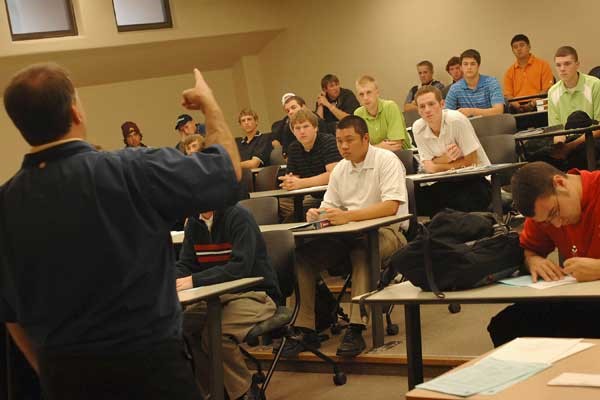















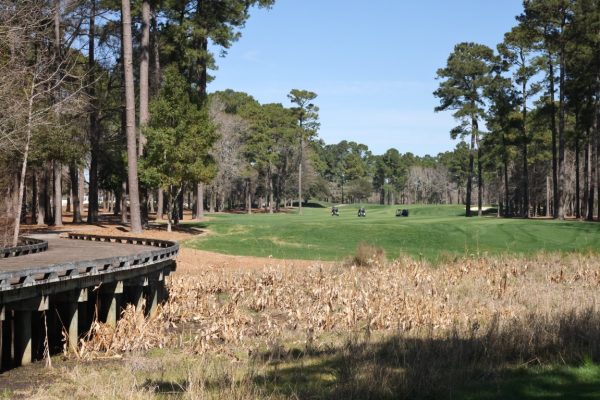


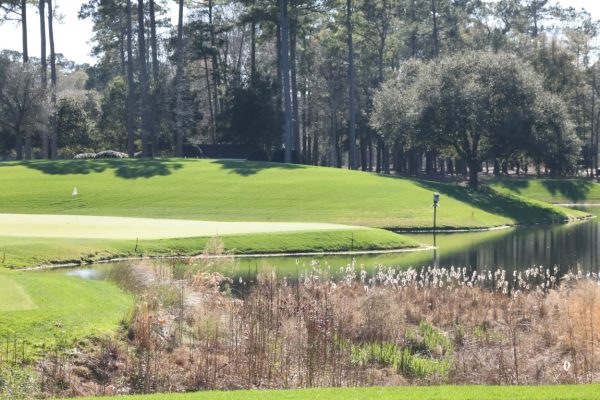



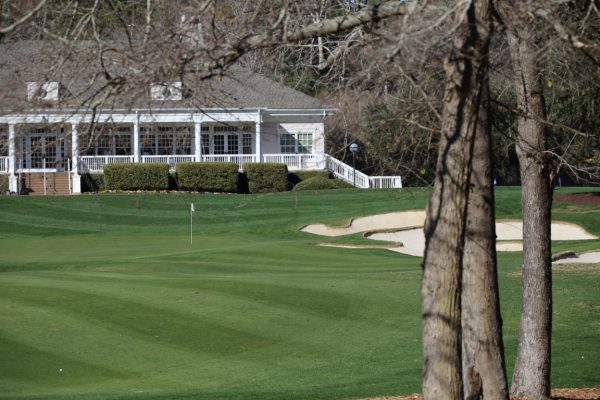
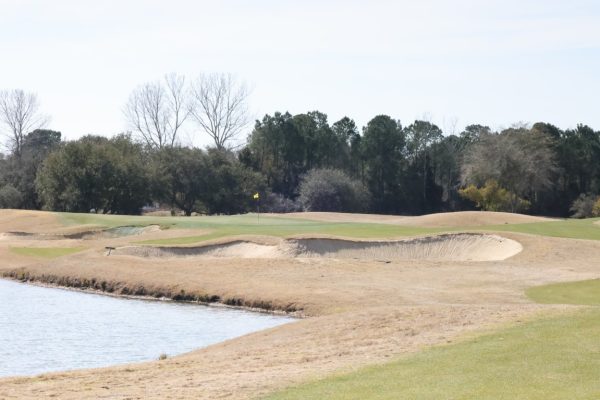







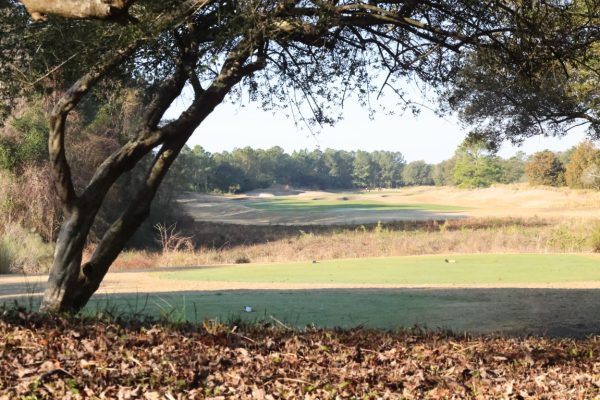


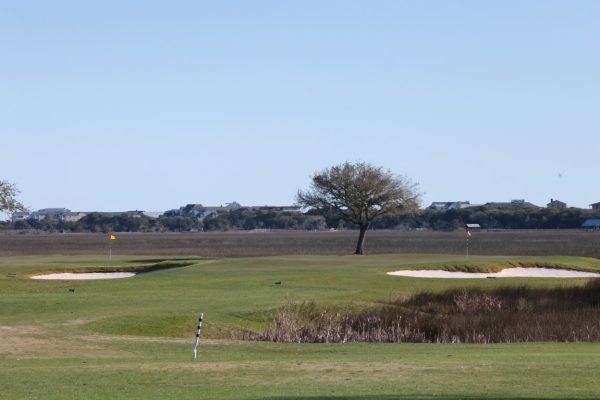
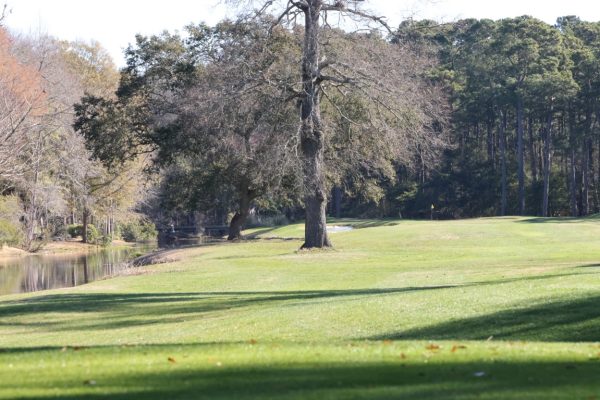
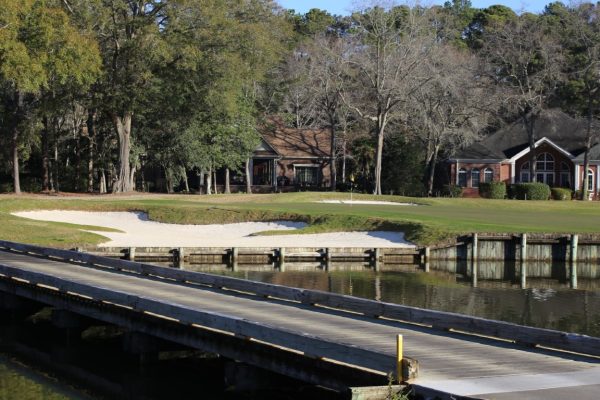

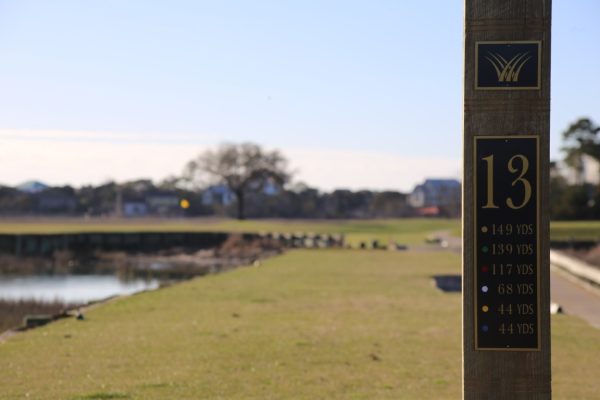

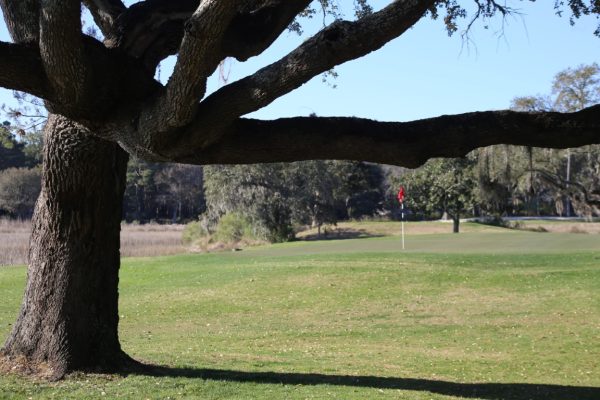

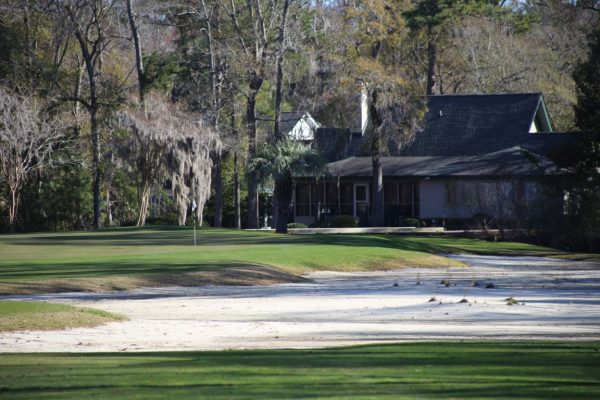

















Tom Wishon
May 7, 2015 at 11:13 am
Anyone seriously considering a career in the golf industry via the PGA has to be VERY careful today to diligently investigate their chances for being able to land a good paying position with good job security and opportunity for advancement. There are so many things going on today in the golf business that all add up to the fact that it has become very difficult to make a good living as a PGA professional.
The drop in participation in the game means fewer golfers are playing fewer rounds in total and there is nothing on the immediate horizon to indicate this is going to change anytime soon. More courses are closing each year than are opening. More and more course owners are choosing not to hire a PGA professional to run their operation. More and more course owners are also taking more things away from the position of head pro. The days of the pro owning the shop, getting 100% of his lesson money, getting a cut off the cart revenue, etc are dwindling. And at present there are more PGA members than there are positions for the pros at golf facilities.
No question those who do complete a PGM degree program have a better chance because of the higher level “pedigree” this gives them. But unless you have very good contacts at very successful golf facilities to get your foot in the door, it’s not really the best time for a person to try to jump in new to become a PGA member with a good head professional position.
Sorry to be Johnny Raincloud on this because there is no question the PGM programs are so good in terms of training people to be the best club professional they can be. It’s just not a great time for goof paying jobs in this field.
Tara
May 6, 2015 at 2:40 pm
@mike…
if you do the research, the % of college graduates employed within 6 months after graduation hovers around 60% and that employment may not necessarily be in their field of study. The rate for graduates of PGA Golf Management programs seeking employment is nearly 100% and their compensation equals if not exceeds the average wage for a graduate just out of college. Nearly all of the management level jobs for golf faciltiies are not going to be found on Google but a PGA Member-only search engine portal.
In the state of Florida, golf provides $6 billion of direct revenue to the economy, that is 2nd only to Mickey and the amusement arena.
If you calculate the number of facilities at 15,000 and our membership at 22k, that’s approximately 1.5 PGA pros / facility and many sites employ beyond that number.
There is no doubt that STEM education is valuable and provides good compensation post grad. However, you should look at the incoming test scores on the math component of standardized tests, it is not promising. Millennials are not necessarily all going to gravitate nor qualify for those types of jobs.
I suggest you spend a day in the shoes of a PGA professional of a busy daily fee or upscale private club and you will find that we are not lazy by any stretch.
mike
May 6, 2015 at 5:31 pm
Don’t make stuff up for the sake of argument. I don’t consider working at golf shops, golf ranges, etc as jobs that require or necessitate a 4-5 year college degree. 100% employment is a blatant lie. There are 15,000 golf courses but the vast majority are small operations where they need nor can afford a PGA pro on staff. Even if you have low incoming math scores, working hard for a year or two can easily get you into a STEM related field. If STEM is not up your alley then there are plenty of other choices you can make contrary to what many think in the US. Guess what the PGA of America CEO was before??? LAWYER…
Jordan
May 5, 2015 at 12:02 pm
As a graduate of Arizona State’s PGM program, I can tell you that there is nothing ‘irresponsible and lazy’ about the program as described above. Earning a bachelor degree while affiliating yourself with the PGA of America is a great accomplishment. Students in this program sacrifice a significant amount of time at their internships while most college students take their summers off. As an employer, why wouldn’t you look to graduates of the PGM to fill managerial positions at some of the top golf facilities? In addition to the connections you make within your PGM program, think about the connections within the membership at the golf clubs you will be employed at, you will be rubbing elbows with some of the most successful business men/women in the world. If you love the game of golf and want to begin a career following your passion for the game, the PGM program is certainly a great option to consider.
mike
May 5, 2015 at 8:32 pm
Go search on any job site and tell me how many hits you get with keywords golf or pga. If you happen to get a hit, can you tell me the salary range? Spending 4-5 years of your life and $100K – $200k in tuition for a degree that probably won’t get you a job. Even in the remote chance you do get a job, the salary will be so low you will still be paying off that college loan well into your thirties. If you want to rub elbows with successful business men/women, why don’t you just become one yourself…
Xander Walsh, PGA
May 5, 2015 at 8:54 pm
Don’t need to do a Google search. Salary range starting out if you work year round is in the 22-33K range. Not great, but read on. Ferris State PGM gets plenty of places looking for alumni from the program and that gets posted for our alumni. The PGA has job postings just for people affiliated with the PGA. Neither will be found on this Google you speak of. I spent 4.5 years of my life in school and on internships. Cost was about $70K and I owe about $40K back. I am, however, a Class A PGA member right out of school and going through the PGM programs is the fastest way to obtain PGA membership. I can’t speak for the other schools, but graduating as a Ferris PGM student it’s not a matter of IF you get a job, it’s where.
mike
May 5, 2015 at 9:38 pm
I never mentioned Google search. PGA job postings can be viewed by anyone who registers on the site and the pickings are slim at best. There’s a place for PGA Professionals in this world but definitely not as a 4 year college degree program. There are about 15,000 golf courses in the us. Do you really think that number can support the number of graduates? Also, how many of those courses are desirable places to work at? There are probably less than a 1000 that are top tier facilities and how many Ferris PGM graduates work at those places? You probably want to add golf ranges and golf stores but I don’t believe you go to a 4 year college to work at those places.
Xander Walsh, PGA
May 6, 2015 at 9:45 am
There are plenty of jobs in the industry besides golf courses and plenty of good jobs at places that are not top tier courses. If becoming a PGA Professional is what you want to do and you don’t have a college degree, PGM is the best way to go. I do know a pro who did not get a college degree and went through the apprentice program to earn his PGA card. He’s a head pro at a top tier facility, but it took him a long time to get to that point.
Mark Reischer
May 5, 2015 at 11:41 am
Glad to see lots of PGA professionals posting and commenting!
A friend of mine who has been a member for over 20 years made an interesting point about the “other” golf training programs which made sense to me:
“The PGA of America and PGA Class-A’s should not support or give credit towards those other programs. They aren’t accredited by the PGA and directly compete with jobs that a PGA member could have had. I don’t understand why any Class-A professional would become a teacher at those schools because you are part of an organization and we have to look out for each other. Those programs don’t support the PGA of America, they directly compete against us. Any Head Professional or Class-A in a position of management (or that hires people) should not be hiring anybody who did not come from a PGM school/went through or going through the PGA program.”
Again, made sense to me. Thoughts?
mike
May 5, 2015 at 2:55 am
If you are senior in high school and love golf? It’s not too late so start studying hard in anything related to STEM, then work hard and save your money. As long as you are disciplined, you should be able to start enjoying the fruits of your labor (like playing golf for fun at very nice courses) as early as when you turn 30. Spending (actually wasting) 4 – 5 years in college to become a PGA professional? Not a good idea. Actually, it’s irresponsible and lazy. I know it sounds great that you do “golf” stuff in college but really think about your future. Do you want a job that will get you “at most” about 30k – 50k a year + some free golf? Leaders in golf are exclusively former lawyers. Leaders in the golf industry are mostly businessmen, financiers, entrepreneurs, and engineers.
Andy Nelson PGA
May 5, 2015 at 10:04 am
Graduating with a Bachelors in Business Administration I do not think for a second that I “wasted my time” as you sincerely quoted in your response. There are actually people in this world that choose to follow their dreams and work hard at it to make a decent living. Plus there are countless PGA Professionals pulling in six figures a year. Also there is no guarantees in the job market these days, and your debate with studying STEM, I have an older sister that studied engineering at Boston University, Purdue, and Notre Dame and she still cannot find employment.
Please think twice before offending the people that truly embrace and love this game enough to devote the better part of their lives to grow the game.
mike
May 5, 2015 at 8:07 pm
You have an older sister that went to 3 different colleges? Did she graduate any of them? 90% of those who graduates with an engineering degree get jobs immediately out of school and the rest get a job at a later time. Just go to monster.com and search “PGA” or “GOLF” and take note of how few jobs there are. Now go to monster.com and search “ENGINEERING” or “PROGRAMING” and take note of numerous results you will get. Average starting salary for a junior programmer (with absolutely no experience) is $75K – $90k and the average salary for a senior programmer is about $250k. Another important point is that there are plenty of these jobs available. Compare that to PGM and Business Administration type jobs… First of all, there aren’t many jobs available. Even if there are available jobs, you need experience and/or connections. Six figures? You may know a few that make six figures but that’s not the norm (and you know it!). Guess how much those PGA Pro’s at Dick’s were getting paid before they got laid off?
mike
May 5, 2015 at 8:49 pm
Your older sister went to 3 different colleges? Did she graduate any of them? 90% of engineering graduates get a job immediately after college and the rest eventually find a job at a later time. You may know of a few PGA Pros that pull in six figures but that’s definitely not the norm (and you know it). Average starting salary for a junior programmer (with absolutely no experience) is $90k. Average salary for a senior programmer is $250k+++. Go to any job site and you will see thousands upon thousands of job openings that are STEM related. Unlike many PGM relate jobs where you need to “know” someone or have some connections, STEM type jobs are purely based on your skills.
Andy
May 6, 2015 at 10:36 pm
Three different schools, one for her bachelors, the next school masters, finally the third PHD
Just wanted to clarify.
I also agree with you that you definitely do not need to attend a PGM school to work in the business, however the road to being able to support yourself in this field can be a lot tougher if you don’t.
I appreciate your input and I can say that a career in the golf business isn’t for everyone but it can be a real blast for the select few that have the right determination and passion for this great game we all love.
Austin
Feb 23, 2017 at 1:33 pm
Mike,
You should actually do some research on the PGM program and what career paths you can have after you graduate. Guess what, they aren’t all career paths to be an assistant pro at a muni or dicks. There is golf club design/repair, merchandising retail, tournament operations, broadcasting, journalism, the list goes on. Just like anything else, hard work and dedication will lead you places. Do you also know how many students are studying to become engineers and programmers right now? probably about a few thousand times more than those studying to become apart of the PGA. If you want a job as a pga teaching pro, thats exactly what you’ll without a worry. If you want to go into the business or journalism side, being a member of the PGA of America adds tons of credibility. Not everyone wants to slave their lives away for 20 years to try and make 250k a year so they can retire at age 50 and THEN start playing golf. A simpler mindset of trying to actually get something out of your career other than a dollar sign is more common than you seem to think
George Jones
May 1, 2015 at 11:26 pm
This was a refreshing article. I’ve often overlooked the gentlemen working behind the counters at local pro shops and golf courses on their affiliation to the pga or what they mean when they say staff taylormade player etc. I wouldn’t mind actually reading what that means.
Andy Nelson PGA
May 1, 2015 at 12:16 pm
Great article! I attended a PGM school, Methodist University, and it was the best 4 years of my life! It was like going to college with 300 golf buddies. The education and connections I got are truly priceless and have set me apart in this great business.
Kyle Brannan
May 1, 2015 at 7:16 pm
Andy was my suite mate on my first internship in Minnesota!
Tom Otto
May 2, 2015 at 2:05 am
Hey Kyle! I’m at the PGM Program at coastal carolina and I read that you did your internship in MN! I’m from there and going back this summer to intern at TPC Twin Cities. If you don’t mind me asking, where do you go for your internship in MN?
Andy Nelson PGA
May 2, 2015 at 11:36 am
We worked at Madden’s Resort in Brainerd Minnesota
I am originally from Duluth but a Floridian now 🙂
Tom Otto
May 2, 2015 at 10:22 pm
That’s awesome! I go up there sometimes in the summer. Great set of golf course out there.
Andy Nelson PGA
May 2, 2015 at 9:50 am
Hey Brother! Hope all is well!
Jenny
May 3, 2015 at 9:18 am
Hey guys, remember that time you turned me into Swiss cheese?
Brandon
May 1, 2015 at 12:15 pm
But does the industry give you enough to succeed? Are there enough good jobs to where you can make a decent living?
These are the questions I would be interested in learning the answers to
Xander Walsh, PGA
May 5, 2015 at 8:57 pm
The industry gives you nothing. You earn it. Yes, you can make a living in the golf industry. It will probably take time and hard work though.
LorenRobertsFan
May 1, 2015 at 12:08 pm
*if
LorenRobertsFan
May 1, 2015 at 12:06 pm
I’m in the program at Mississippi State. I couldn’t recommend it enough of you are interested in being prepared for a career as a PGA Professional. The internships, faculties, and seminars give you everything you need to succeed
Josh
May 1, 2015 at 1:10 pm
Hail State!